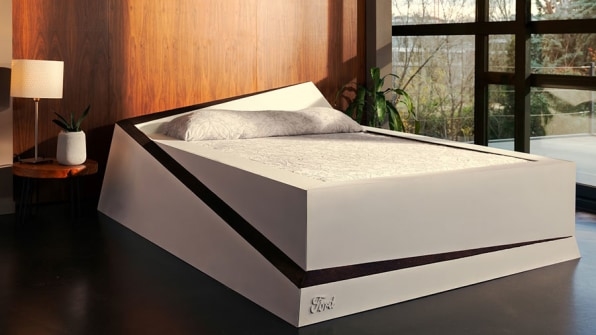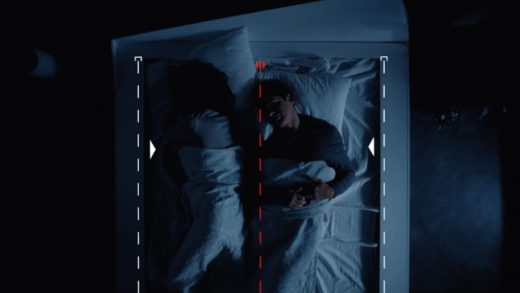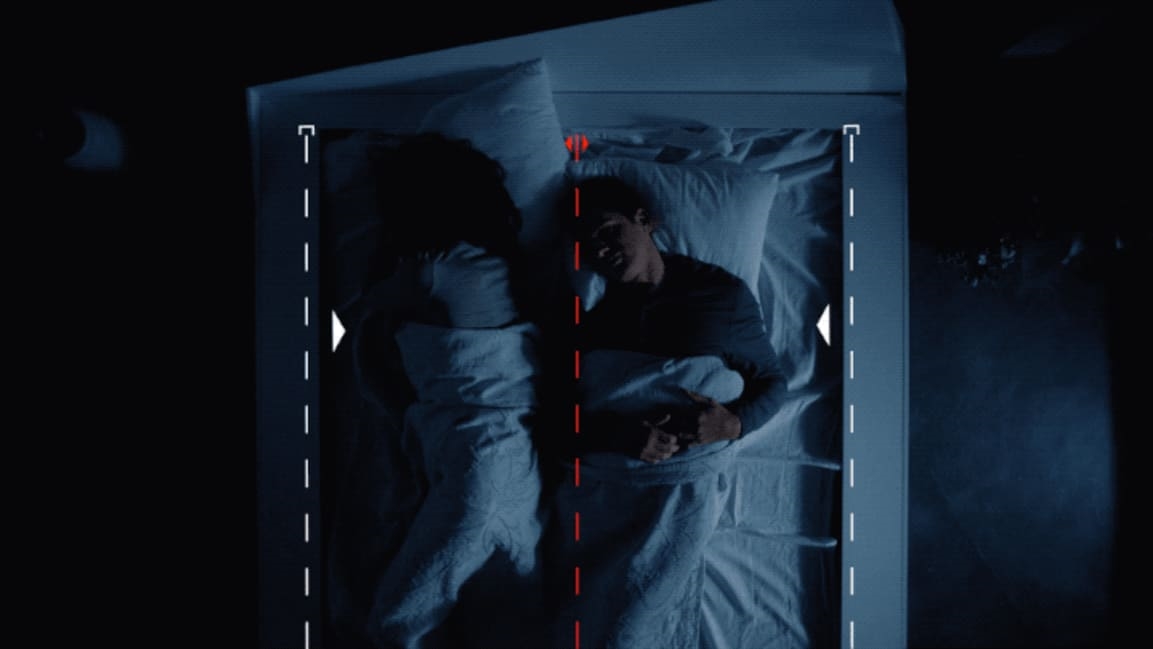Ford’s smart bed could save you from bed hogs, bad sleep, and possibly divorce
Sleep divorce. Having been married four times, I had no idea that this existed, but it’s a real thing: Couples sleep in separate beds to avoid annoying each other at night. I could have used some of that or a bed that Ford claims can make it easier to sleep with a partner.
Its name is the Lane-Keeping, and it was designed to defend people from bed hogs, the kind of partner who moves at night, expanding through the entire mattress and cornering his or her partner/victim to an impossibly thin slice of territory right on the edge of the bed. It’s a very real problem that drives many people mad. Reportedly, 30% of Americans want a sleep divorce from their partner.
The Lane-Keeping bed can avoid part of these co-sleeping problems with a clever idea: the “infinite mattress,” a treadmill-like surface that can move whoever is sleeping on it using electric engines.
Inside this mattress, pressure sensors distributed through its surface can track the position of the two people in bed. When one moves and starts pushing the partner toward one edge of the bed, a computer engages the electric motors that roll the mattress on the opposite direction, placing the couple again at the center, leaving plenty of space on both sides.
The bed is the third of a series of conceptual devices made for Ford. The Quiet Kennel, a noise-cancelling dog house that could save the Goodboys from stress-inducing loud sounds using noise cancelling technology, and the Max Motor Dream, a crib designed to make babies sleep by simulating the motion, light, and sound of a car ride.
Those three devices were created by the Spanish design firm Espada y Santa Cruz. Nerea Goikoetxea, one of the company partners, told me that Ford and its agency GTB came to them with the request of creating a series of devices that amplified and connected the carmaker’s technologies to other aspects of life, removed from automobiles. This is very much in keeping with Ford CEO Jim Hackett’s vision to transform Ford into a tech and mobility company, not just a car company.
SO GTB suggested using Ford’s lane-keeping technology–which uses optical sensors to detect lane lines, warning drivers when they are driving over them–to make a bed that could keep people from invading their personal space.

With that brief, the Madrid-based designers came up with different solutions. Initially, they thought about dividing the interior of the mattress into two different platforms. If one of the partners moved into the other person’s space, his or her platform would automatically incline on the opposite direction, pushing the bed invader down the mattress hill to the other side of the bed.
But they quickly realized that, to move a sleeping body, the inclination would have to be dangerously steep, and their objective was to make this useable in real life. GTB Associate Creative Director Marcos Almirante and Art Director Yan Cucco then pitched in with a “way more complex but effective idea”–the infinite rolling mattress.
How would the bed detect motion? The designers initially thought about using a night-vision camera suspended on the ceiling, with computer software capable of tracking the position of the sleepers. This solution was deemed too creepy; nobody wants a camera over their bed. Finally, they decided to load the mattress with pressure sensors, which was a much cleaner solution too, since they are inside the bed and therefore invisible to the eye.
The result is the domestic equivalent of, yes, staying in your own lane. Sadly, the Lane-Keeping bed is not available for purchase. The design–which was made of cork and wood, inspired by the shape of a road going up a hill–is one of a kind, made to make every single couple on the planet green with envy.
But maybe it’s for the best: studio partner Juan Santa Cruz told me that the only drawback of this bed is that the rolling mattress is rather hard and may be uncomfortable for many. Perhaps some other bed manufacturer can come with a more comfortable and definitive idea. I’m thinking laser-driven, motion-activated tasers here. Someone please make this, and take all my money.
Fast Company , Read Full Story
(15)



